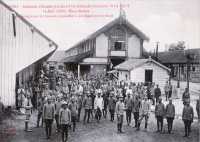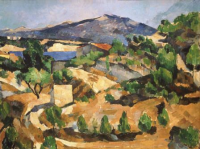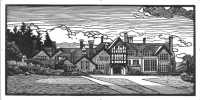Browse the collection
Sorted by occupation
Elizabeth Cooper
Place of birth: Hampshire
Service: Christian charity worker, 1914 - 1919
Notes: Elizabeth Cooper was awarded the OBE in 1918 for her work for sailors on minesweepers operating out of Milford Haven. She had moved to the area in the 1890s as a superintendent of the Mission to Deep Sea Fishermen. Many trawlers were employed in minesweeping during the War.
Reference: WaW0224

Newspaper report
Report of Elizabeth Cooper’s award of OBE, Haverfordwest & Milford Haven Telegraph 9 Jan 1918
Janet Elizabeth Evans
Place of birth: Newtown
Service: Clerk, QMAAC
Death: May 1919, London, not known / anhysbys
Memorial: War memorial, Newtown, Montgomeryshire
Notes: Janet became a teacher but later left to join the Army Pay Corps in Chester. In the summer of 1918 she joined the clerical staff of the QMAAC and was stationed in London. Following a period of indifferent health she was admitted to a London military hospital in April 1919. She died a month later, aged 21.
Reference: WaW0016
Amy Goodwin
Place of birth: Cefn Mawr?
Service: Clerk, WAAC/QMAAC, 1917 - 1919
Notes: Amy Goodwin volunteered for the WAAC in 1917. After training at Kinmel Camp, Boddelwyddan, she was sent to Bourges in France to with the American Expeditionary Force as a book-keeper. Her collection of photographs from her time in France are deposited in West Glamorgan Archives.
Sources: http://www3.swansea.gov.uk/CalmView/Overview.aspx?s=Amy+Goodwin
Reference: WaW0123
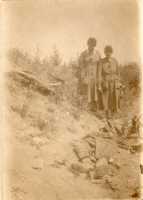
Trenches tour 2
Amy and a friend on a tour of the trenches, Baillie Fields, Soissons. There is a German corpse in the foreground.
Maud Jepson
Place of birth: Aberystwyth
Service: Clerk, WAAC, June / Mehefin 1917
Notes: Maud Jepson was ‘the first volunteer from Aberystwyth’ to join the group of WAAC clerks assembled by Lady Mackworth to work in France.
Reference: WaW0326
Flossie Abbott
Place of birth: Bridgend ?
Service: Clerk, Bridgend Food Control Committee, 1919
Notes: In October 1919 Flossie Abbott requested a pay rise from £1 12s 6d a week to £2 10s, to gain parity with the clerk of Penybont Food Control Committee. A man doing the same job would have received £3 a week. Only one member of the committee opposed the motion.
Reference: WaW0351

Newspaper report
Report of the meeting of the Bridgend Food Committee, where Flossie Abbott’s pay-rise was agreed. Glamorgan Gazette 17th October 1919.
Gweneth Kate Moy Evans
Place of birth: Swansea
Service: Clerk, Sandycroft, NEF Queensferry, 1916 - 1918
Notes: Gweneth was appointed a clerk at the Labour Exchange attached to the National Explosives Factory, Queensferry, without having to sit the usual Civil Service examination. She had previously worked in the Labour Exchange in Neath. Gweneth was awarded the MBE in June 1918.rnrn
Reference: WaW0366
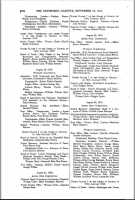
Edinburgh Gazette
Notice of Gweneth Moy Evans’s appointment as clerk. The Edinburgh Gazette, September 12, 1916.
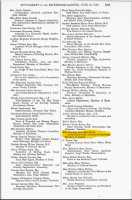
Edinburgh Gazette
Announcement of Gweneth Moy Evans’s award of MBE. The Edinburgh Gazette June 19th 1918.
Elizabeth Jane [Batchie] Griffiths
Place of birth: Llandovery
Service: Clerk, VAD, 1918/01/28 – 1919/02/27
Notes: Batchie left school soon after her 18th birthday to join the VAD. She had previously trained as a volunteer with the Carmarthen Reserves. She worked as a clerk in the quartermaster’s stores at Catterick Military Hospital in Yorkshire, where she seems to have had an active social life! Thanks to Alathea Anderssohn.
Reference: WaW0392

Batchie Griffiths
Batchie Griffiths with other members of the Quartermaster’s Stores. Batchie is seated on the right. The photograph was taken on 24th March 1918. Thanks to Alathea Anderssohn.

Red Cross record card
Red Cross card for Batchie Griffiths. Note she was registered using her nickname.
![Batchie Griffiths Photograph of Batchie between her friends Biggsie [l] and Minnie [r]. Note that non-nursing VADs seem to have worn ties as part of their everyday uniform. Thanks to Alathea Anderssohn.](lluniau/biggsiebatchieminnie_bawd.jpg)
Batchie Griffiths
Photograph of Batchie between her friends Biggsie [l] and Minnie [r]. Note that non-nursing VADs seem to have worn ties as part of their everyday uniform. Thanks to Alathea Anderssohn.
Enid Spedding
Place of birth: Goginan
Service: Clerk ?, WAAC, 1917 -
Notes: Enid seems to have joined the WAAC in Autumn 1917.
Reference: WaW0310
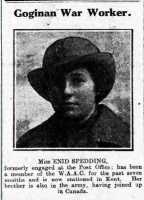
Newspaper photograph and report
Newspaper photograph of Enid Spedding, WAAC. Cambrian News 3rd May 1918.
Gwendoline Elizabeth Davies
Place of birth: Llandinam
Service: Collector, philanthropist, canteen worker, French Red Cross, 1916 - 1918
Death: 1952/07/03, Leukaemia /Lewcemia
Notes: Gwendoline, born 1882, was the elder granddaughter of David Davies the coal owner and builder of Barry Docks. She, her sister Margaret [qv] and her brother David each received one third of his vast fortune on the death of their father in 1898. All three were strict Calvinistic Methodists, with a strong philanthropic streak. The two sisters began to travel widely, and to study art in Europe. In their early twenties they were beginning to form the collection that is now at the National Museum Wales. In March 1913 the collection was exhibited, anonymously, in Cardiff; the sisters covering all of the cost. It attracted 26000 visitors. At the outbreak of war the sisters promoted a scheme to invite Belgian artists and musicians to come to Wales, settling them in Aberystwyth and Llanidloes [see De Saedeleer]. In 1916, following the death of her cousin in the Dardanelles, Gwen volunteered to join the French Red Cross, leaving in July to open a Cantine des Dames Anglaises where she remained until the end of the war. The Cantine was moved in 1917 to Troyes, where her sister joined her. Gwen’s job as Directrice meant visits to headquarters in Paris, which in turn enabled her to add pictures, including two Cézannes, to her collection. In early 1918 her collections in Paris were at risk from air-raids and long distance shelling, so it was arranged for them to be shipped back to Britain. By 1922 she had given up collecting art. She felt she could not spend money in this way ‘in the face of appalling need everywhere’. During the 1920s Gwendoline set up a centre for the arts at Gregynog near Llandinam, promoting art in the cause of peace and social progress. She continued to give generously to educational and other causes. On her death in 1951 she bequeathed her remarkable collection of paintings and sculpture to the National Museum of Wales.
Sources: Oliver Fairclough [ed] Things of Beauty: What two sisters did for Wales. National Museum Wales 2007. Trevor Fishlock A Gift of Sunlight. Gomer 2014\r\nhttps://museum.wales/articles/2007-07-29/The-Davies-Sisters-during-the-First-World-War/
Reference: WaW0333

Oprning of the Ocean Coal Company pithead baths
Gwendoline Davies (centre) and Margaret (left) at the opening of the first pithead baths in Wales, summer 1916. This was shortly before she left for France.
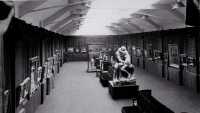
Loan exhibition 1913
Loan exhibition of the Davies sisters’ collection in City Hall, Cardiff, February 1913. It includes Rodin’s The Kiss, bought by Gwendoline in 1912.
Margaret Sidney Davies
Place of birth: Llandinam
Service: Collector, philanthropist, canteen worker, French Red Cross, 1917 - 1919
Death: 1963, Cause not known
Notes: Margaret, born 1884, was the younger sister of Gwendoline [qv] and granddaughter of David Davies the coal owner and builder of Barry Docks. She, her sister and her brother David each received one third of his vast fortune on the death of their father in 1898. All three were strict Calvinistic Methodists, with a strong philanthropic streak. The two sisters began to travel widely, and to study art in Europe. Margaret also studied drawing and printmaking. In their early twenties they were beginning to form the collection that is now at the National Museum Wales. In March 1913 the collection was exhibited, anonymously, in Cardiff; the sisters covering all of the cost. There were 26000 visitors. At the outbreak of war the sisters promoted a scheme to invite Belgian artists and musicians to come to Wales, and settle in Aberystwyth and Llanidloes. In 1917 Margaret joined Gwendoline at the Cantine des Dames Anglais, now sited at Troyes railway station. In her diary she wrote that the chief blessings in a canteen were ‘a tap of water and a gramophone. The former makes life bearable for us and the latter makes life bearable to the poilu’ (private soldier). For a while she and Gwendoline were moved to an American canteen nearer the front; there they experienced air raids and two of their colleagues were killed by bombs. In the winter of 1918-1919 she worked for three months in a canteen in Rouen organised by the Scottish Churches before returning to Wales. Later Margaret helped set up the centre for the arts at Gregynog. She continued to collect paintings, usually by modern British artists, until the late 1950s. Her collection, like her sister’s, was bequeathed to the National Museum of Wales.
Sources: Oliver Fairclough [ed] Things of Beauty: What two sisters did for Wales. National Museum Wales 2007. Trevor Fishlock A Gift of Sunlight. Gomer 2014\r\nhttps://museum.wales/articles/2007-07-29/The-Davies-Sisters-during-the-First-World-War/
Reference: WaW0334
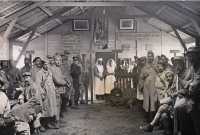
Cantine des Dames Anglaises
Margaret Davies is the figure on the right, at the back of the Cantine des Dames Anglaises.



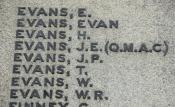
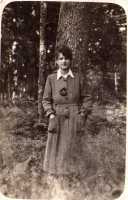
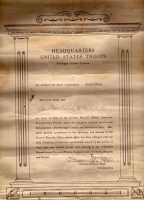
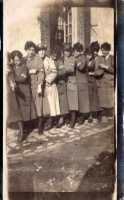
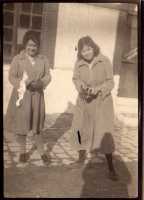
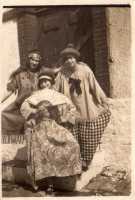
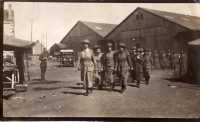
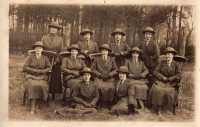
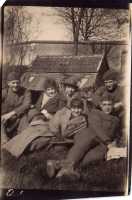
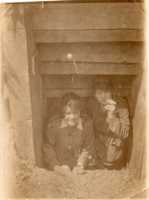


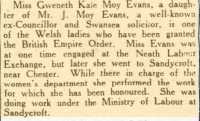
![Red Cross record card [reverse] Record card for Batchie Griffiths giving details of her career.](lluniau/27e56f17ddc3096a49b397578ea716ea_bawd.jpg)

